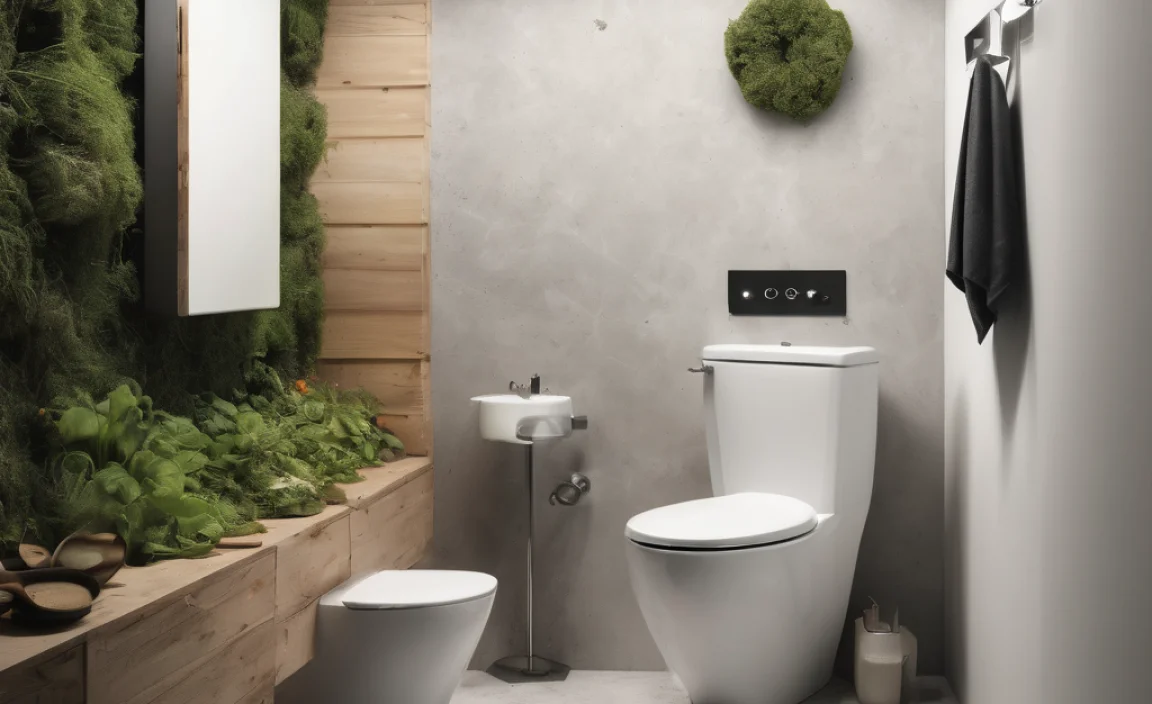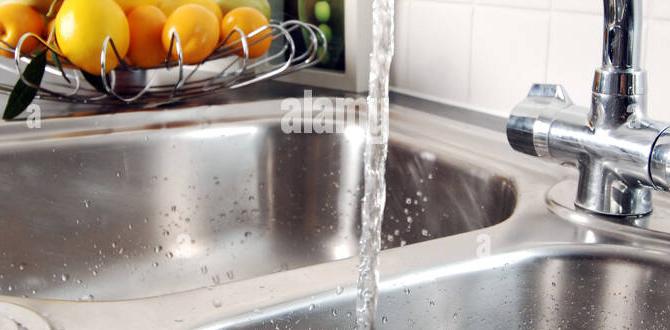Quick Summary: Yes, hot and cold faucet cartridges are usually different. Hot water cartridges are designed to handle constant heat exposure and often have different rubber compounds or valve designs than cold water cartridges. Always check the manufacturer’s markings or your faucet’s diagram to ensure you replace them with the correct type. Using the wrong cartridge can lead to leaks or premature failure.
Ever turned on your faucet and gotten a trickle instead of a stream? Or maybe it’s dripping non-stop, driving you crazy and wasting water? A faulty faucet cartridge is often the culprit. Replacing it seems simple, but here’s the catch: are the cartridges for the hot and cold sides the same?
Don’t worry, you’re not alone in wondering about this! Many homeowners face this issue, but I’m here to walk you through the differences, step by step. We’ll cover how to identify the right cartridges, what to watch out for, and even some tips to make the replacement process a breeze. Get ready to tackle this DIY project with confidence!
Understanding Faucet Cartridges
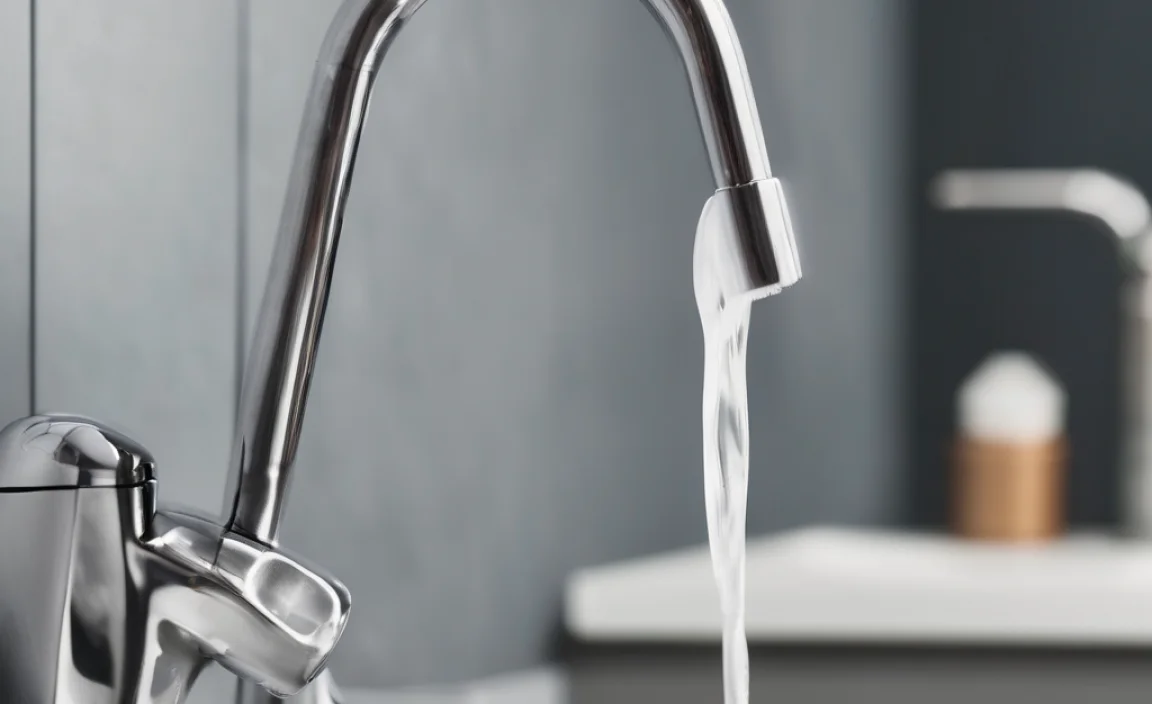
Let’s start with the basics. A faucet cartridge is a valve inside your faucet that controls the flow of water. When you turn the handle, the cartridge moves, allowing water to flow from the supply lines and out through the spout. Over time, these cartridges can wear out due to mineral buildup, corrosion, or general wear and tear. This leads to drips, leaks, or difficulty controlling water temperature.
Types of Faucet Cartridges
There are several types of faucet cartridges, each designed for specific faucet styles:
- Compression Cartridges: These are older style cartridges that use rubber washers to seal the valve seat. They are easily identifiable because they require you to tighten the handle to shut off the water.
- Ball-Type Cartridges: Found mainly in older single-handle faucets, ball-type cartridges use a slotted ball to control water flow and mixing.
- Ceramic Disc Cartridges: These cartridges use ceramic discs with precisely aligned holes to control water flow. They are known for their durability and smooth operation.
- Sleeve Cartridges: Sleeve cartridges are a plastic or brass sleeve that moves up and down to control water flow.
Key Differences Between Hot and Cold Cartridges
While they might look similar, hot and cold faucet cartridges often have key differences to handle their specific tasks.
- Material Composition: Hot water cartridges are built to withstand higher temperatures continuously. They often use rubber or plastic components that are more heat-resistant.
- Valve Design: Some manufacturers design hot water cartridges with different valve mechanisms to better regulate the higher water temperature and pressure.
- Markings and Color Codes: Cartridges are often marked with “H” for hot and “C” for cold. Sometimes, they use color codes like red for hot and blue for cold.
Identifying Your Faucet Cartridge Type

Before you rush to the hardware store, take some time to figure out what type of cartridge your faucet uses. This will save you a lot of headaches later on.
Checking for Markings
The easiest way to identify your faucet cartridge is by looking for markings. Many cartridges have “H” or “C” stamped on them. Some may also have color-coded indicators like red for hot and blue for cold. If you see these, you’re in luck!
Consulting the Faucet Diagram
If there are no visible markings, don’t worry. Most faucets come with a diagram or parts list. Check your original documentation or search online using the faucet model number. These diagrams usually show the exact cartridge type and part number you need.
Measuring the Cartridge
If you can’t find any markings or diagrams, you can try measuring the cartridge. Use a caliper or ruler to measure the length, diameter, and stem size. Compare these measurements with cartridge specifications online or at your local hardware store.
Taking Pictures
A picture is worth a thousand words! Take clear photos of your cartridge from multiple angles. Show these pictures to a hardware store expert. They can often identify the cartridge type just by looking at it.
Step-by-Step Guide to Replacing Faucet Cartridges
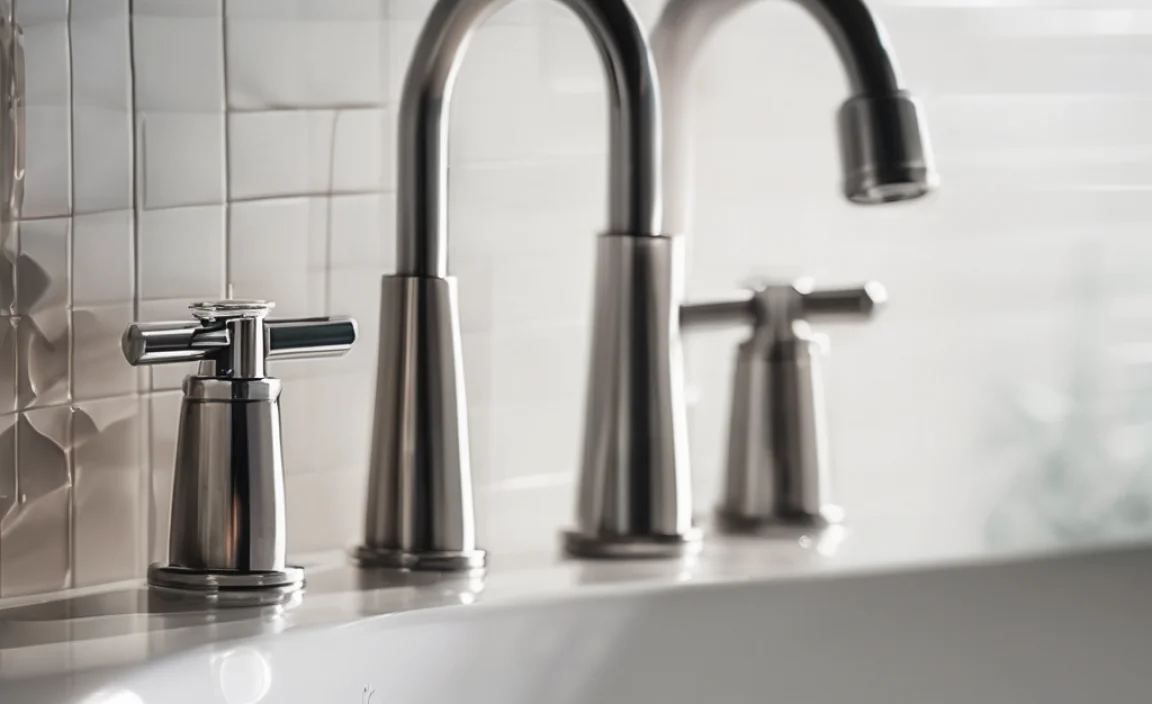
Now that you know the basics and have identified your cartridge type, let’s get into the actual replacement process. Here’s a step-by-step guide to help you through it.
Tools and Materials You’ll Need
Before you start, gather all the necessary tools and materials. This will make the job smoother and prevent you from running back and forth.
- New faucet cartridges (hot and cold)
- Adjustable wrench
- Screwdriver (Phillips and flathead)
- Penetrating oil
- Plumber’s grease
- Clean cloth or sponge
- Pliers (optional)
- Basin wrench (optional)
Step 1: Turn Off the Water Supply
This is the most important step! Locate the shut-off valves under the sink. Turn both the hot and cold water valves clockwise until they are completely closed. If you don’t have shut-off valves, you’ll need to turn off the main water supply to your house.
Step 2: Protect the Sink
Place a towel or cloth in the sink to protect it from scratches and dropped tools. This also helps catch any small parts that might fall during the process.
Step 3: Remove the Faucet Handle
The method for removing the faucet handle varies depending on the faucet type. Look for a set screw on the side or under the handle. Use an Allen wrench or screwdriver to loosen the set screw. Once loosened, gently pull the handle off. Some handles might be held in place by a decorative cap that you need to pry off first.
Step 4: Remove the Old Cartridge
With the handle removed, you’ll see a retaining clip or nut holding the cartridge in place. Use pliers or an adjustable wrench to remove the clip or nut. If it’s stuck, apply some penetrating oil and wait a few minutes. Once the clip or nut is removed, gently pull the old cartridge straight up. If it’s stubborn, wiggle it slightly or use pliers to get a better grip.
Step 5: Clean the Faucet Housing
Before installing the new cartridge, clean the inside of the faucet housing. Use a clean cloth or sponge to remove any mineral deposits or debris. This ensures a good seal for the new cartridge.
Step 6: Install the New Cartridge
Apply a small amount of plumber’s grease to the O-rings on the new cartridge. This helps it slide in smoothly and creates a watertight seal. Insert the new cartridge into the faucet housing, making sure it’s oriented correctly. Push it down firmly until it clicks into place or sits flush with the faucet body.
Step 7: Reassemble the Faucet
Reinstall the retaining clip or nut to secure the new cartridge. Make sure it’s tight enough to hold the cartridge in place but not so tight that it damages the cartridge or faucet body. Reattach the faucet handle and tighten the set screw. Replace any decorative caps.
Step 8: Turn on the Water Supply
Slowly turn on the water supply valves under the sink. Check for leaks around the faucet base and handle. If you see any leaks, tighten the connections or adjust the cartridge position slightly.
Step 9: Test the Faucet
Test both the hot and cold water to ensure they are flowing properly and the temperature is correct. Check for any drips or leaks when the faucet is turned off. If everything looks good, congratulations! You’ve successfully replaced your faucet cartridges.
Troubleshooting Common Issues
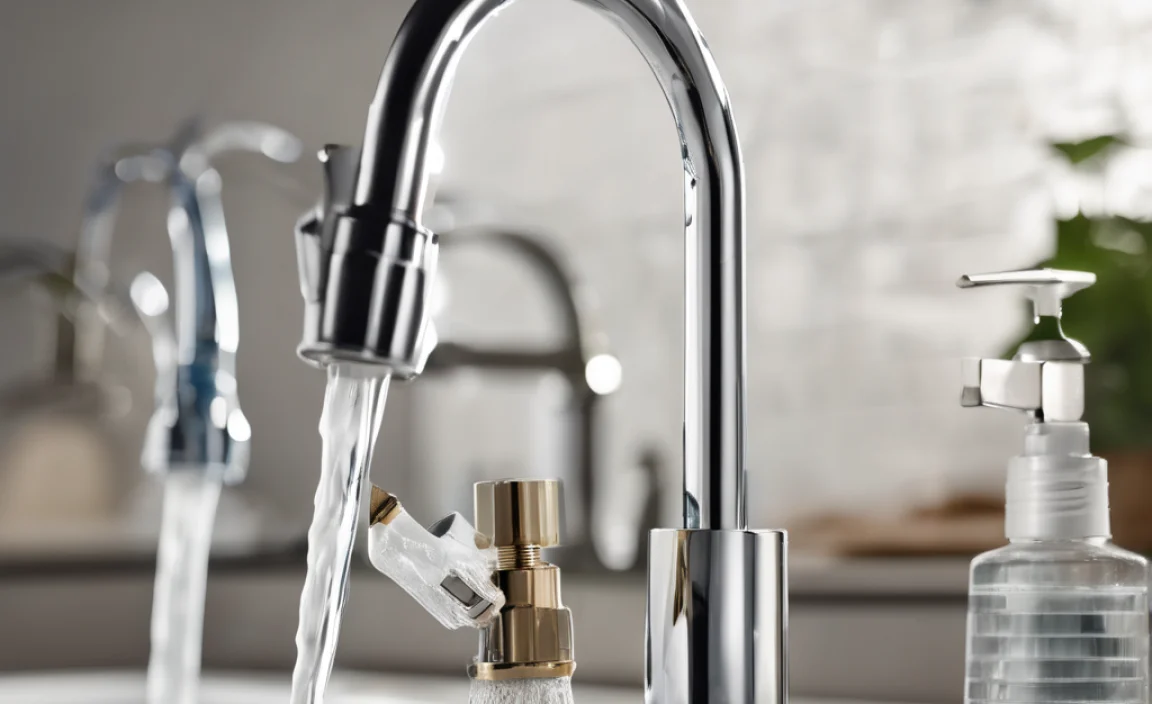
Sometimes, even with the best instructions, things don’t go as planned. Here are some common issues you might encounter and how to solve them.
The New Cartridge Still Leaks
If your new cartridge is still leaking, double-check the following:
- Correct Cartridge Type: Make sure you installed the correct cartridge for your faucet model.
- Proper Installation: Ensure the cartridge is fully seated and the retaining clip or nut is tight.
- Damaged O-Rings: Inspect the O-rings on the cartridge for any damage. Replace the cartridge if the O-rings are faulty.
- Mineral Buildup: Clean the faucet housing thoroughly to remove any mineral deposits that might be preventing a good seal.
The Handle is Hard to Turn
If the handle is hard to turn after replacing the cartridge, try these solutions:
- Plumber’s Grease: Apply plumber’s grease to the cartridge stem and handle components.
- Over-Tightening: Loosen the retaining clip or nut slightly if it’s too tight.
- Incorrect Cartridge: Ensure the cartridge is the correct type and size for your faucet.
Water Temperature is Not Correct
If the water temperature is not correct after replacing the cartridge, check these:
- Cartridge Orientation: Make sure the hot and cold cartridges are installed on the correct sides.
- Cartridge Function: Test the cartridge by turning it by hand before installing the handle to ensure it is mixing water correctly.
When to Call a Plumber

While replacing faucet cartridges is a manageable DIY task, there are times when it’s best to call a professional plumber.
- Extensive Corrosion: If the faucet body is heavily corroded, it might be difficult to remove the old cartridge without damaging the faucet.
- Broken Faucet: If the faucet is cracked or broken, it’s usually better to replace the entire faucet rather than just the cartridge.
- No Shut-Off Valves: If you don’t have shut-off valves and are uncomfortable turning off the main water supply, call a plumber.
- Persistent Leaks: If you’ve tried replacing the cartridge and the faucet still leaks, there might be a more complex issue that requires professional attention.
Tips for Extending the Life of Your Faucet Cartridges
To keep your faucets running smoothly and avoid frequent cartridge replacements, follow these tips:
- Use a Water Softener: Hard water can cause mineral buildup that damages faucet cartridges. A water softener can help reduce mineral content.
- Regular Cleaning: Clean your faucets regularly to remove mineral deposits and grime. Use a mild detergent and a soft cloth.
- Avoid Abrasive Cleaners: Abrasive cleaners can scratch and damage faucet finishes and internal components.
- Gentle Handling: Avoid excessive force when turning the faucet handle. This can damage the cartridge and shorten its lifespan.
Cost Comparison: DIY vs. Hiring a Plumber
One of the biggest considerations when deciding whether to DIY or hire a plumber is the cost. Here’s a general breakdown of the expenses involved.
| Expense | DIY | Hiring a Plumber |
|---|---|---|
| Faucet Cartridges | $10 – $30 per cartridge | $10 – $30 per cartridge (plus markup) |
| Tools (if needed) | $0 – $50 (one-time investment) | Included in service fee |
| Labor | Free (your time) | $75 – $200 per hour |
| Total Cost | $10 – $80 | $85 – $430+ |
As you can see, doing it yourself can save you a significant amount of money, especially if you already have the necessary tools. However, if you’re not comfortable with plumbing or encounter complications, hiring a plumber might be the better option.
Choosing the Right Faucet Cartridge Brand
When it comes to faucet cartridges, quality matters. Choosing a reputable brand can ensure better performance and longevity. Here are some popular and reliable brands:
- Moen: Known for their high-quality and durable cartridges.
- Delta: Offers a wide range of cartridges for various faucet models.
- Kohler: Provides reliable cartridges with excellent performance.
- American Standard: Known for their innovative designs and durable materials.
When selecting a brand, consider the following factors:
- Compatibility: Ensure the cartridge is compatible with your faucet model.
- Material Quality: Look for cartridges made from durable materials like brass or ceramic.
- Warranty: Check if the cartridge comes with a warranty. This can protect you against defects and premature failure.
- Customer Reviews: Read customer reviews to get an idea of the cartridge’s performance and reliability.
Environmental Impact of Leaky Faucets
Beyond the annoyance and cost, leaky faucets have a significant environmental impact. Even a small drip can waste a surprising amount of water over time. Here’s why it matters:
- Water Waste: A faucet that drips once per second can waste over 3,000 gallons of water per year.
- Increased Water Bills: Wasted water translates to higher water bills for you and increased strain on municipal water systems.
- Energy Consumption: Heating wasted water consumes energy, leading to higher energy bills and increased greenhouse gas emissions.
- Resource Depletion: Water is a precious resource, and wasting it contributes to water scarcity and environmental degradation.
By fixing leaky faucets promptly, you can conserve water, save money, and reduce your environmental footprint.
FAQ: Faucet Cartridges
Here are some frequently asked questions about faucet cartridges.
Are all faucet cartridges the same size?
No, faucet cartridges come in various sizes and shapes. The size depends on the faucet model and brand. Always check your faucet’s diagram or measure the old cartridge to ensure you get the correct size.
Can I use a universal faucet cartridge?
While some universal cartridges are available, they may not fit perfectly or provide the same performance as a cartridge designed specifically for your faucet. It’s best to use a cartridge that matches your faucet model.
How often should I replace faucet cartridges?
The lifespan of a faucet cartridge depends on water quality and usage. Generally, you should replace cartridges every 3-5 years or when you notice leaks or difficulty controlling water flow.
Can I clean a faucet cartridge instead of replacing it?
Cleaning a faucet cartridge can sometimes temporarily fix minor issues, but it’s not a long-term solution. Mineral buildup and wear and tear will eventually require replacement.
What does it mean when a faucet handle is hard to turn?
A hard-to-turn faucet handle usually indicates a worn-out or corroded cartridge. Replacing the cartridge and applying plumber’s grease can solve this issue.
Do I need special tools to replace a faucet cartridge?
You’ll typically need an adjustable wrench, screwdrivers (Phillips and flathead), and possibly pliers. Penetrating oil and plumber’s grease are also helpful.
Where can I buy replacement faucet cartridges?
You can buy replacement faucet cartridges at most hardware stores, home improvement centers, and online retailers.
Conclusion
So, are hot and cold faucet cartridges different? Absolutely. Understanding these differences and knowing how to identify and replace them can save you time, money, and frustration. By following the step-by-step guide, you can confidently tackle this DIY project and keep your faucets running smoothly. Remember to take your time, double-check your work, and don’t hesitate to call a plumber if you encounter any difficulties. Happy fixing!


